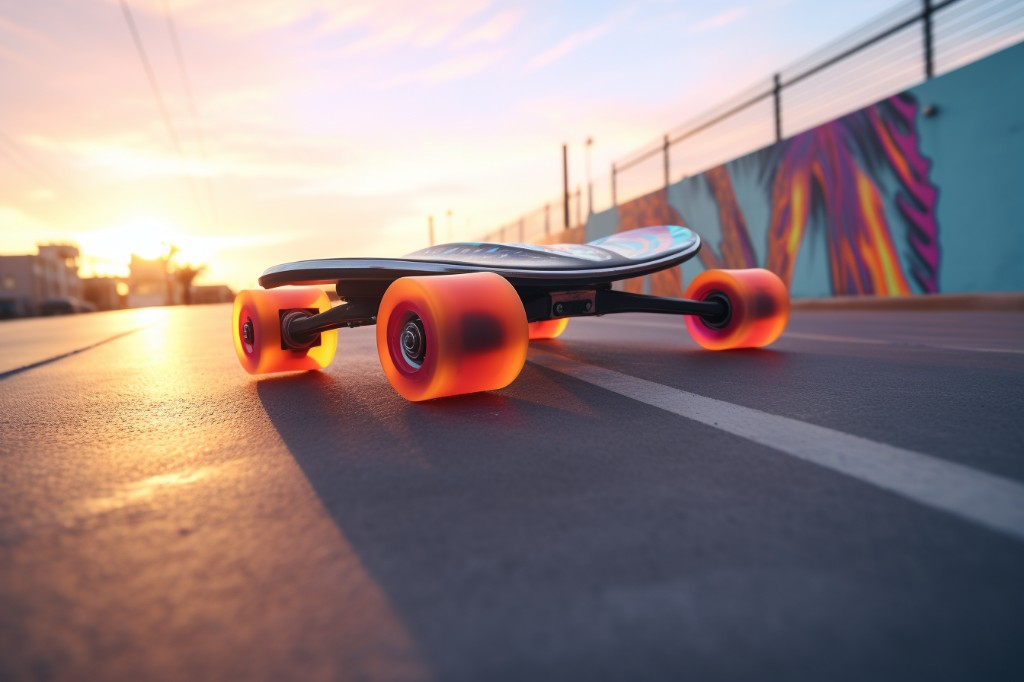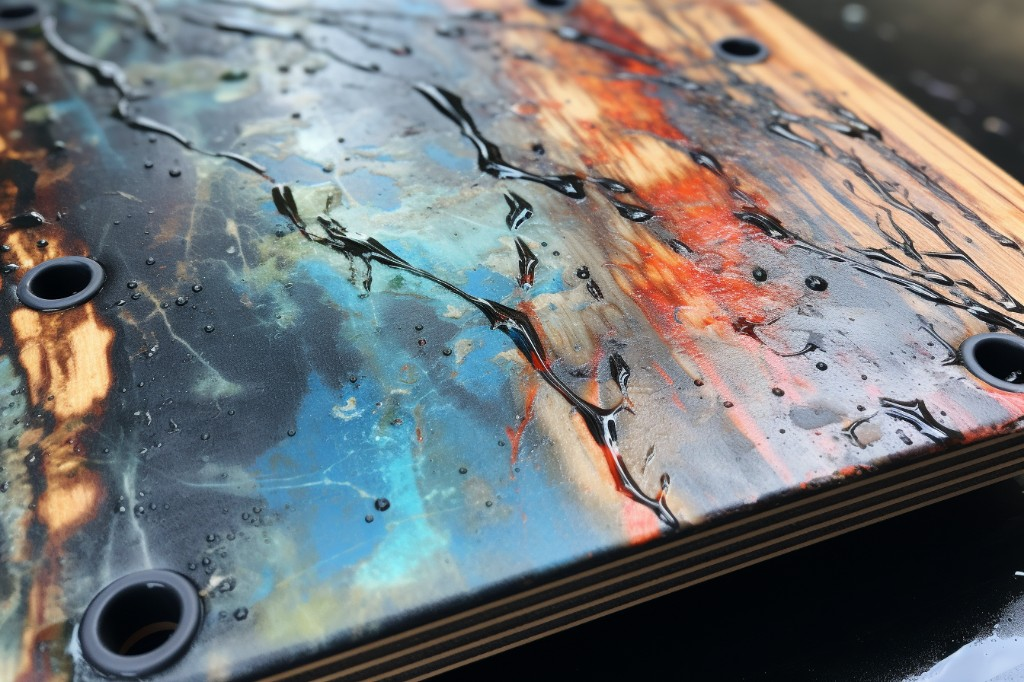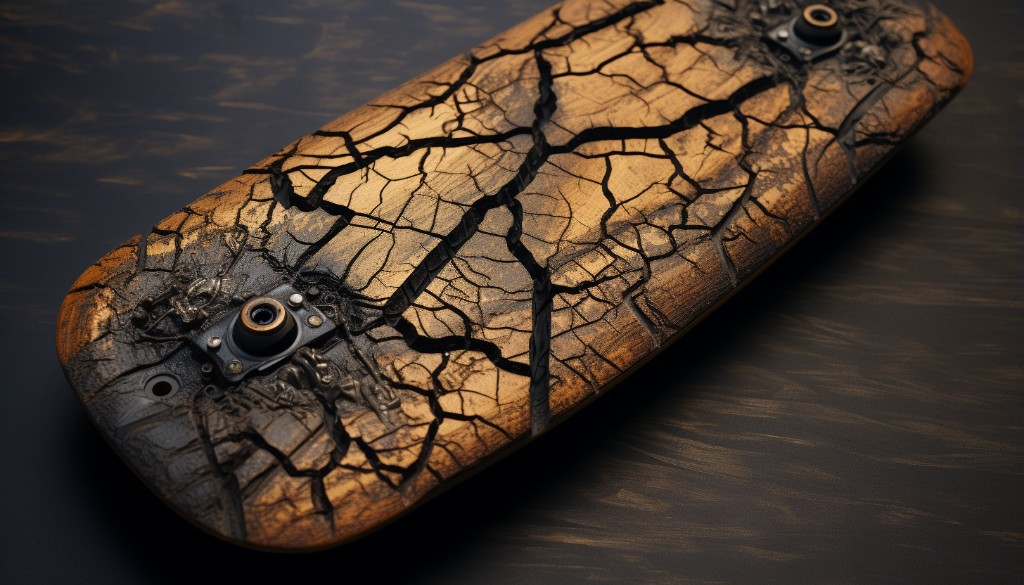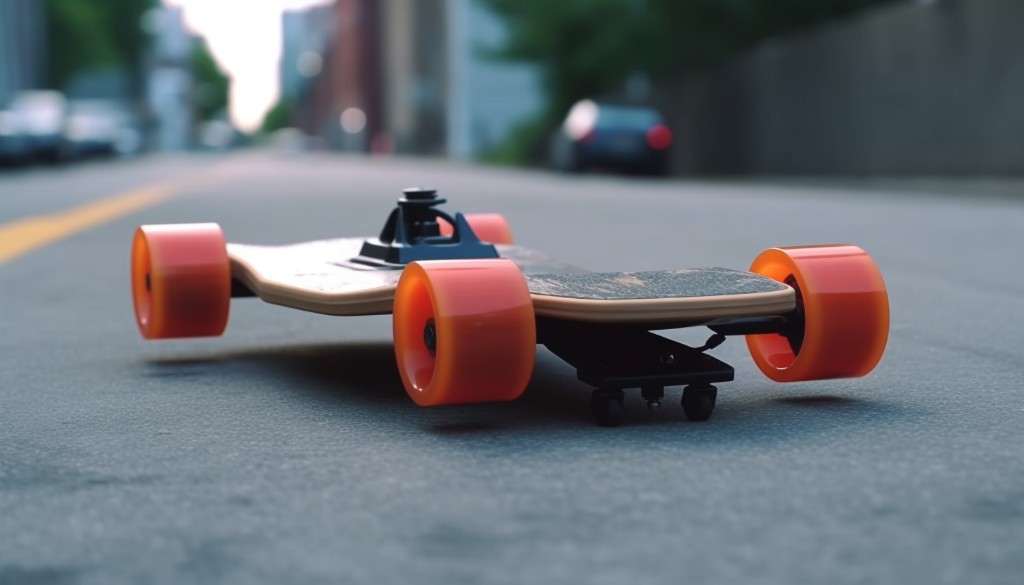Imagine yourself cruising through the city on your favorite electric skateboard. The freedom you feel is unmatched, but just like any beloved possession, your board requires some TLC to keep it in top form. This comprehensive guide will unlock the secrets of maintaining your electric skateboard deck and all of its essential components, ensuring a smoother ride every time. From cleaning procedures and bearing lubrication to wheel replacements and water damage prevention – we’ve got you covered, ensuring your board lasts longer and performs better.
What we’ll cover:
- Importance of Skateboard Deck Maintenance
- Essential Cleaning Procedures
- Bearing Lubrication Regimen
- Impact of Truck Adjustment
- Wheel Replacement Guide
- Battery and Charger Checks
- Water Damage Prevention Tips
- Strategies for Rust Removal
- Managing Physical Damage Checks
- Understanding Friction’s Role
- Importance of Vehicle Weight Checks
Now let’s jump right in, and convince you why maintaining your electric skateboard deck is just as thrilling as the ride itself!
Understanding the Importance of Electric Skateboard Deck Maintenance
Maintenance is an essential part of owning any vehicle, and your electric skateboard is no different. Regular electric skateboard maintenance can have a significant impact on both the performance and the longevity of your board. When you maintain your electric skateboard properly, it’s not just about keeping it in working order. It’s about ensuring that it performs at its best for as long as possible.
Maintaining your electric skateboard is much like maintaining a car or a bike. Regular checks and minor tweaks can prevent major issues down the line. Think of maintenance as the key to keep your board running smoothly and efficiently. Not only will this make your rides safer and more enjoyable, but it’ll also extend the life of your skateboard.

The importance of maintenance cannot be overstated. After all, maintenance is key when it comes to preserving the functionality and integrity of your electric skateboard. So, are you ready to learn some tips on how to keep your board in top shape? Let’s dive into the details!
Essential Cleaning Procedures for Electric Skateboard Decks
Cleaning your electric skateboard should be a regular part of your maintenance routine. Dirt and dust can cause wear and tear on the deck and other components over time, affecting performance. That’s why it’s essential to clean your skateboard after every ride.
Here are some steps you can follow to keep your skateboard clean and in perfect condition:
- Start by removing any loose dirt or debris from the surface. You can use a brush or a cloth for this.
- Wipe the skateboard with a dry, clean cloth to remove dust and small particles.
- For stubborn grime, you can use a mild detergent mixed with warm water. Remember to dry your board thoroughly afterward to prevent water damage.
- Don’t forget about the wheels! Take them off if necessary and clean the board from dirt and grime in those hard-to-reach areas.
By following these steps, you’ll ensure that your skateboard stays clean, in perfect condition, and ready for your next ride. Remember that a clean skateboard is a happy skateboard!

The Right Regimen for Bearing Lubrication
Bearings are another crucial component of your electric skateboard that requires regular maintenance. Proper bearing lubrication can significantly prolong the life of your board and enhance its performance.
There are various types of lubricants you can use for bearings, including oils and greases. The choice depends on your riding conditions and personal preferences. However, no matter which type you choose, it’s important to apply it correctly to maximize its benefits.
Here is a simple guide on how to do it:
- Start by removing the bearings from the wheels.
- Clean them thoroughly using a commercial bearing cleaner or a homemade solvent.
- Let them dry completely before you start applying the lubricant.
- Apply the maintenance oil to ensure your bearings perform optimally. A drop or two should suffice.
- Reassemble everything once you’re done.
Remember, a little oil to ensure your bearings stay smooth can go a long way in improving your riding experience and extending the life of your board. Regular bearing maintenance should be part of every rider’s routine!

A Closer Look at Truck Adjustment and its Impact
Adjusting the trucks on your electric skateboard can significantly affect the way it performs. The trucks are the heart of your board, connecting the wheels to the deck and influencing the stability and control of your ride.
The process of truck adjustment is rather straightforward. You need to check screws and nuts regularly, ensuring their optimal tightness. If you find them loose, tighten them up using a skateboard tool until they reach desired stiffness. Be careful not to overtighten them, as it can lead to unnecessary wear and tear.
Tight or loose trucks can greatly influence your ride quality. Tightened trucks provide more stability when cruising at higher speeds, thus reducing the chances of speed wobbles. They are a great choice for downhill rides or when you are taking sharp turns.
On the other hand, loosened trucks offer more maneuverability, ideal for carving and making sharp turns at lower speeds. They also ensure all screws and nuts are in full contact with the surface, distributing weight evenly, and providing a smoother ride.
Remember, truck adjustment is a personal preference that depends on your riding style, so there’s no definitive right or wrong setting. The key lies in experimenting with different levels of tightness until you find what suits you best.

When and How to Replace Wheels
Maintaining the wheels of your electric skateboard is crucial for its overall performance. Neglecting this aspect can lead to poor ride quality and potential accidents.
Recognizing when your wheels need replacement involves looking for signs of wear and tear. These signs include cracks on the wheel surface, flat spots caused by sliding or intense braking, and significant reduction in wheel diameter due to wear.
Once you’ve decided it’s time for a wheel replacement, start by removing the old wheels using a skate tool. Then, install the new wheels in their place, ensuring they are securely fitted on the trucks. It’s important to occasionally rotate the wheels to ensure even wear and extend their lifespan.
One critical aspect during wheel replacement is checking the condition of your bearings. If they are rusty or don’t spin freely, it’s advisable to replace them too to ensure optimal performance.

Battery Maintenance: Checks and Replacements
An electric skateboard’s battery is its lifeblood, powering both the motor and the board’s electronics. Therefore, it’s essential to carry out regular battery check-ups and maintenance.
One simple yet effective way to maintain your battery is to charge it regularly. Ideally, you should charge the battery after every ride, regardless of how drained it is. Batteries should be recharged to avoid damages brought about by a completely exhausted battery.
It’s also crucial to know when your battery needs replacement. There are several signs of battery failure you should look out for; decreased range (your skateboard doesn’t go as far as it used to on a full charge), longer charging times, or even unusual swelling of the battery case.
When these signs occur, it’s time for a new battery. Replacing a battery involves disconnecting the old one from the board’s power system and replacing it with a new one. Always make sure to handle batteries with care as they contain harmful chemicals that could cause injuries if mishandled.
It’s important to note that proper electric skateboard battery maintenance can significantly extend its lifespan while ensuring excellent performance throughout its service life.

Understanding the Role of Charger Checks
Charger checks are a crucial aspect of maintaining your electric skateboard. Conducting regular charger checks can help pinpoint potential issues early and prevent damage to your skateboard. For instance, if your skateboard’s battery isn’t charging to its full capacity or if it’s taking longer than usual to charge, these could be indicators of charger issues.
Implementing a charger check into your maintenance routine is as simple as observing the behavior of the charger. Noticing any unusual changes in the charging process is the first step. If there are noticeable issues such as overheating, inconsistent charging, or a broken charging cable, it may be time for a replacement.

Preventing Water Damage for a Longer Skateboard Lifespan
Now let’s discuss water damage prevention and why it’s vital for your electric skateboard. While most electric skateboards are built to withstand some degree of moisture, they aren’t entirely waterproof. This means that prolonged exposure to water can cause significant damage, potentially affecting the deck, electronics, and battery.
Here are some handy tips for preventing water damage:
- Avoid riding in heavy rain or through large puddles.
- Dry the board thoroughly if it gets wet.
- Store your board in a dry and cool place.
- Regularly inspect your board for signs of water damage like warping or discoloration on the deck.
By taking these steps, you can ensure that there is no water infiltrating vital components of your board.

Effective Strategies for Rust Removal
Rust can be a real downer for an electric skateboard enthusiast. It not only affects the aesthetics of your board but can significantly impact its performance. Rust can cause friction in moving parts, which may in turn reduce speed and smoothness of your ride.
The good news is rust removal is not a complicated process. Here are some effective strategies:
- For small areas of rust, you can use a mixture of baking soda and water to create a paste. Apply this paste to the rusted area and scrub gently with a brush.
- Heavier rust might require stronger solutions like a commercial rust remover. Make sure to follow the instructions on the product label for safety.
- In extreme cases where rust has caused physical damage to parts of the board, replacing those parts might be the best course of action.
Remember, prevention is better than cure. Keeping your board dry and clean, especially after rides in wet conditions, can help prevent rust in the first place.
Physical Damage Checks: What to Look For and How to Manage It
When it comes to maintaining an electric skateboard, one of the first steps should always be a thorough physical damage check. It’s a fact of life that skateboards can sustain damage from general use, and being aware of these issues can help keep your board in top condition and help you prevent any unnecessary skateboarding accidents.
Common types of physical damage include cracks in the deck, chips on the edges, and warping of the board. A simple visual inspection can usually reveal these issues. Use your hands to feel along the board for any irregularities or rough spots that may indicate damage.
Repairing physical damage can be a bit of a challenge, but many minor issues can be fixed with some handy DIY methods. For instance, if you have a crack in your deck, you can often use wood glue and clamps to repair it.
However, if the damage is severe, it may be necessary to replace parts of the skateboard altogether. Keep in mind that it might be less expensive in the long run to replace a heavily damaged deck than to continually repair it.

The Role of Friction in Electric Skateboard Performance
Friction is an important aspect to consider when we talk about electric skateboard performance. The interplay between the wheels and the riding surface largely determines how your skateboard handles and performs.
Increased friction can slow the skateboard down, making it less efficient, and causing unnecessary strain on the electric motor. Therefore, performing a regular friction check is crucial. This could involve checking the wheels for wear and tear, and ensuring that they spin freely without sticking or stuttering.
Maintenance comes into play here as a means of managing friction. Regular cleaning of the wheels and bearings can help reduce friction by removing grit and dirt that may be causing unnecessary resistance. Applying a lubricant specially designed for skateboard bearings can also help to reduce friction and improve performance.
Understanding the Importance of Vehicle Weight Checks
One aspect of electric skateboard maintenance that’s easy to overlook is consistently performing a vehicle weight check. The weight of your board can significantly impact how it performs, and keeping it within an ideal range can improve your experience.
Excessive weight can put additional strain on the motor and battery, reducing overall performance and possibly shortening the lifespan of these components. It may also affect your ability to control the skateboard effectively.
It’s always good to keep the weight as low as possible while still meeting your individual needs for speed and range. You can often find the manufacturer’s recommended weight range in your skateboard’s user manual.
To reduce weight, consider carrying less when you ride. Extra items like backpacks or heavy shoes can quickly add up. Additionally, routine maintenance and replacing worn-out parts can help keep your board lighter and more efficient.

Closing Thoughts
The journey through the intricate world of electric skateboard maintenance, right from understanding its importance to the specifics of vehicle weight checks, is indeed an enlightening one. The emphasis on deck maintenance and essential cleaning procedures highlight the importance of cleanliness and its impact on your skateboard’s lifespan. Bearing lubrication, truck adjustment, wheel replacements and battery checks all go hand-in-hand to ensure your skateboard performs optimally. The prevention of water damage and rust, coupled with physical damage checks, not only prolongs your skateboard’s life but also heighten safety. Carrying out regular maintenance on your electric skateboard is a sure-fire way to guarantee it performs as it should for many years to come!
Frequently Asked Questions
How often should I clean my electric skateboard?
Cleaning your electric skateboard should be done regularly, ideally after every ride. This prevents the buildup of dirt and debris which can affect the board’s performance.
What type of lubricant should I use for my bearings?
For optimal bearing performance, it is recommended to use a lubricant specifically designed for skateboards or other similar high-speed machinery.
How do I know if my trucks need adjustment?
Your trucks may need adjustment if you notice difficulty in steering, or if your board leans too much or too little when you’re turning.
What are the signs that my wheels need replacement?
If your wheels show signs of significant wear like deep cuts, cracks, or if they are unevenly worn out, it might be time to replace them.
How can I tell if my battery needs replacing?
If your battery doesn’t hold a charge as long as it used to or if your electric skateboard’s performance has decreased, your battery might need replacement.
